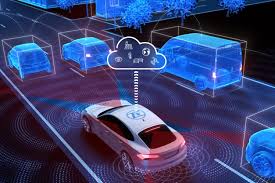AI and Autonomous Vehicles
The Future of Self-Driving Technology
Autonomous vehicles, also known as self-driving cars, are revolutionizing the transportation industry. Powered by artificial intelligence (AI), these vehicles have the potential to transform our lives in countless ways.
The Future of Driving: Exploring AI and Autonomous Vehicles
AI and Autonomous Vehicles: Exploring the future of self-driving technology.
AI and Autonomous Vehicles
Autonomous vehicles, also known as self-driving cars, are revolutionizing the transportation industry. Powered by artificial intelligence (AI), these vehicles have the potential to transform our lives in countless ways.
The Future of Self-Driving Technology
The Promise of Autonomous Vehicles
Autonomous vehicles hold the promise of a safer, more efficient, and more accessible transportation system. Here are some key benefits:
- Enhanced Safety and Reduced Accidents: AI-powered vehicles can react faster and more accurately than humans, potentially reducing accidents caused by human error.
- Improved Traffic Flow and Efficiency: Autonomous vehicles can communicate with each other and traffic infrastructure, optimizing traffic flow and reducing congestion.
- Accessibility for All: Self-driving cars can provide transportation for people who are unable to drive themselves, such as seniors, individuals with disabilities, and children.
The Challenges of Autonomous Vehicles
While the potential benefits of autonomous vehicles are significant, there are also challenges that need to be addressed:
- Ethical Considerations and Decision-Making: In situations where accidents are unavoidable, AI algorithms need to make ethical decisions, which can be complex and controversial.
- Technological Limitations and Reliability: Autonomous vehicles rely on complex sensors and algorithms that need to be highly reliable to ensure safety.
- Legal and Regulatory Frameworks: Governments need to develop clear laws and regulations to govern the use of autonomous vehicles on public roads.
The Evolution of Autonomous Vehicles
Autonomous vehicle technology is rapidly evolving. Here are some key aspects of this evolution:
- From Assisted Driving to Full Autonomy: Current vehicles offer various driver-assist features, but the goal is to achieve full autonomy, where the vehicle handles all driving tasks.
- The Role of Sensors and Perception Systems: Autonomous vehicles use a wide range of sensors, including cameras, lidar, radar, and ultrasonic sensors, to perceive their surroundings.
- The Importance of Data and Machine Learning: AI algorithms learn from vast amounts of data to improve their decision-making abilities and adapt to different driving scenarios.
Summary
- Autonomous vehicles powered by AI have the potential to revolutionize transportation, offering benefits such as enhanced safety, improved traffic flow, and accessibility for all.
- Challenges include ethical considerations, technological limitations, and legal frameworks that need to be addressed.
- The technology is rapidly evolving, with advancements in sensor technology, AI algorithms, and data analysis.
